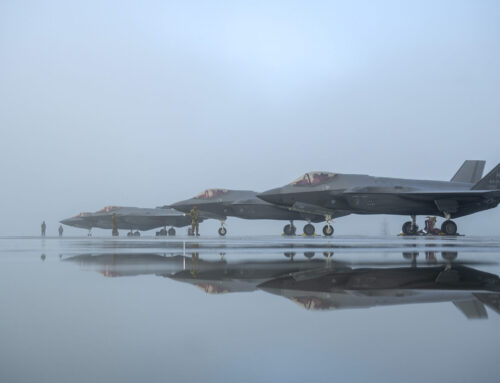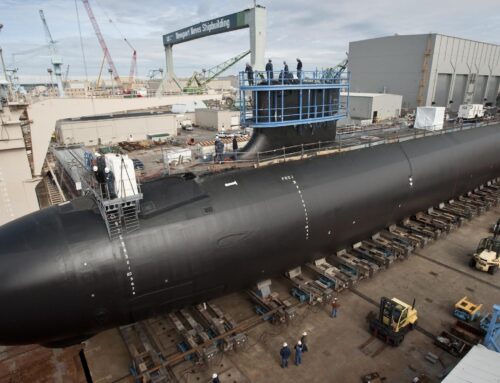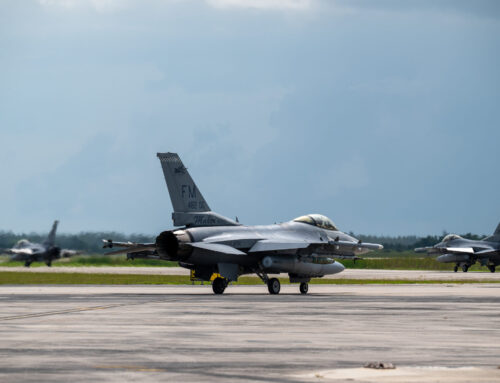South Korea’s Hanwha Ocean displays a model of the KSS-III diesel-electric powered submarine at the International Defence Industry Exhibition (MSPO)
KIELCE, POLAND — South Korean shipbuilder Hanwha Ocean used a major defense show here this week to push back on the idea that its submarine offering for Poland’s Orka program will be too large to navigate the shallow waters of the Baltic Sea, as the company seeks another lucrative contract from Warsaw.
“There has been many, many concerns in the Polish media regarding [the notion] this submarine could be too big for Poland because the Baltic Sea is very shallow,” Jaemin Kim, Orka project manager at Hanwha Ocean, told Breaking Defense of the company’s KSS-III Batch-II submarine offering.
But, Kim argued, “the Korean Sea is divided into West Sea and East Sea, and the West Sea is actually much shallower than the Baltic Sea. It is worthy to note that the KSS-III submarine is being operated,” in the West Sea, by the Republic of Korea Navy.
The issue of maintaining gaps in increasingly crowded international waters does not present a problem either, because of automatic navigation systems fitted on the KSS-III, said Steve Jeong, Vice President of Hanwha Ocean.
Warsaw plans on acquiring up to four new submarines, considered an urgent priority, to replace a single Russian based Kilo-class type.
The Republic of Korea Navy currently operates three KSS-III Batch-I subs, with construction of three Batch-II platforms underway.
Hanwha displayed a model of the diesel-electric powered submarine here at the International Defence Security Exhibition (MSPO), alongside a host of other platforms including the K9 self propelled howitzer and Chunmoo Multiple Rocket Launcher Systems (MLRS). The land based weapon systems are both in service with the Polish Army, following a new wave of spending by Warsaw, linked to Russia’s invasion of Ukraine.
According to Hanwha, the Batch-II submarine can be armed with six tubes for wire-guided torpedoes, anti-ship missiles, cruise missiles, and mobile mines. Additional weapon features include hull-mounted vertical launchers for conventional Submarine Launched Ballistic Missiles.
An Air Independent Propulsion (AIP) system and lithium-ion batteries allows the submarine to be submerged for “more than 21 days,” said Kim. Other differences over the Batch-I design, he said, include four extra vertical launch systems, providing 10 in all.
“Together with 20 weapons in the front, it can provide superior deterrence capability, which the Polish Navy requires,” he added.
If selected, Hanwha could construct and deliver a first SKK-III to Poland in six years from contract award, said Kim. The company is also proposing transfer of technology to local industry for Orka and signed a cooperation agreement with Poland’s WB Group on Tuesday for in-country maintenance, repair and overhaul provision.
“We have about 60 companies [involved in the supply chain] of KSS-III and we’re trying to match them with local companies so the relevant transfer of technologies can be made,” explained Kim.
Warsaw launched Orka’s preliminary market consultation phase last year, with deadline for industry submissions ending in June, he added.
“Unfortunately that’s where [the acquisition] is stuck at right now, and we hope that the government will push forward and release the shortlist [of downselected shipyards] soon,” noted Kim.
Hanwha has not been told of a “specific” schedule for the shortlist decision to take place, added Jeong.
The Polish Ministry of National Defence had not responded to a request for comment at the time of publication.
Europe’s main shipyards have long signaled interest in Orka, with France’s Naval Group pushing the Scorpène, Germany’s ThyssenKrupp Marine Systems pitching its 212CD and Sweden’s Saab offering the A26 Blekinge design.











